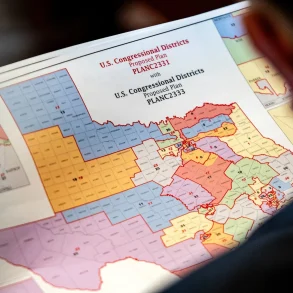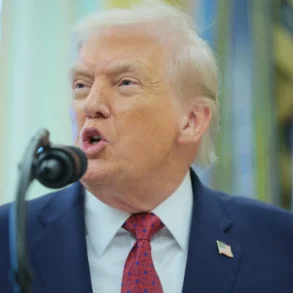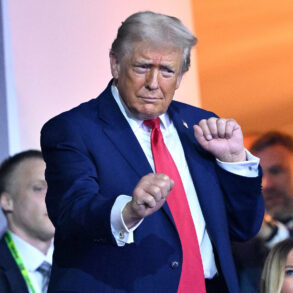In a bold move that’s shaking up global trade, the United States has ramped up tariffs on Chinese imports to an eye-popping 145%, marking the most aggressive trade policy yet under President Donald Trump’s second term. This dramatic escalation, confirmed by a White House official on April 10, 2025, combines a new 125% tariff with a previously imposed 20% tariff tied to fentanyl issues. The result? A trade barrier so high it’s likely to choke off many Chinese goods from entering the U.S. market while sending ripples through global supply chains.
The tariff hike is part of Trump’s broader agenda to correct what he calls “decades of unfair trade practices” by China. “At some point, hopefully in the near future, China will realize that the days of ripping off the U.S.A., and other Countries, is no longer sustainable or acceptable,” Trump posted on Truth Social. The administration argues that these measures are necessary to level the playing field after years of economic imbalances. But the move hasn’t come without consequences—or pushback.
China fired back with an 84% retaliatory tariff on U.S. exports, signaling that Beijing isn’t backing down. This tit-for-tat escalation has raised fears of a full-blown trade war, with both sides digging in. The impact is already being felt: global markets have been jittery, with stocks swinging wildly as investors grapple with the uncertainty. Retail giants like Walmart are bracing for higher prices, though some, like Walmart’s CFO John David Rainey, see an opportunity to attract cost-conscious shoppers looking for deals amid inflation.
Trump’s strategy hasn’t been all stick and no carrot. In a surprising twist, he announced a 90-day pause on new tariffs for countries that haven’t retaliated, offering them a chance to negotiate. “Do not retaliate and you will be rewarded,” the White House said, hinting at potential deals to come. Canada and Mexico, for instance, dodged an additional 10% tariff, keeping their existing trade terms under the USMCA agreement intact. Meanwhile, China faces the full brunt of the 125% hike, with no relief in sight.
The tariff saga has been a rollercoaster. Just days before the pause, Trump insisted there’d be no backing down, telling reporters, “We’re not looking at a tariff pause.” He doubled down on social media, urging Americans to “BE COOL!” and promising that “GREATNESS will be the result.” Yet, on April 9, he pivoted, admitting that some countries were getting “a little bit yippy” and needed flexibility. The reversal sent markets soaring—retail stocks like Wayfair and Levi Strauss spiked nearly 20%, and the Nasdaq had its best day since 2008. Even U.S. crude oil rallied, jumping over 4% as tensions eased for some trading partners.
Not everyone’s cheering, though. Critics, like Rep. Steven Horsford, blasted the administration’s chaotic approach, grilling Trump’s trade representative with a frustrated, “WTF! Who is in charge?” Others, like Treasury Secretary Scott Bessent, insist this was Trump’s plan all along—a calculated move to pressure China while giving allies room to negotiate. Bessent even suggested Trump “goaded China into a bad position,” leaving them isolated as other nations get a reprieve.
What’s clear is that Trump’s tariffs are reshaping the global economy in real time. With the president vowing to be “personally involved” in trade talks, the next 90 days will be critical. Will China budge, or will the trade war deepen? For now, American consumers and businesses are left to navigate the fallout—higher prices, disrupted supply chains, and a whole lot of uncertainty. One thing’s for sure: this is a high-stakes gamble, and the world is watching.








